 |
Langley Research CenterTurbulence Modeling Resource |
Jump to: SA Results, SA-RC Results, SSTm Results, SST-RCm Results, SSG/LRR-RSM-w2012 Results, Wilcox2006-klim-m Results, EASMko2003-S Results, K-e-Rt-RC Results
Return to: 2D Convex Curvature Boundary Layer Case Intro Page
Return to: Turbulence Modeling Resource Home Page
2D Convex Curvature Boundary Layer Validation Case
GLVY-RSM-2012 Model Results
Link to GLVY-RSM-2012 equations
Note that thorough
grid studies were not performed for validation cases such as this one.
Some effort was made to ensure reasonable grid resolutions, but there may still be
small noticeable discretization errors. Therefore, these validation results shown should be considered
representative, but not "truth."
Above GLVY-RSM-2012 results are
from the code aerodynamics.1.0.3 on the 1025x385 grid.
The inflow boundary-layer thickness was 0.0005 m = 0.5 mm (the computations were also run with no
boundary layer imposed at the inflow, and very similar results were obtained).
The inflow turbulence intensity = 1% and
freestream lengthscale = 0.125 m = 125 mm, which is roughly the duct's height
(see Note 4 on
GLVY model description page).
The other computational
parameters and post-processing to get the local velocities and Reynolds-stresses in the wall-aligned frame
are those of the test-case description (see
2D Convex Curvature Boundary Layer Case Intro Page).
For the station at x=-0.166124 m, the parallel velocity component
up is the velocity parallel
to the wall (which is canted at 30 deg relative to Cartesian coordinates),
and the up'vp' is taken with respect to the wall-normal
and wall-parallel directions. The formulas for computing these rotated quantities from
Cartesian quantities are:
Although the main focus of this case is on the bottom (convex) wall region, top (concave) wall
skin friction results from the 2-D computation are also shown in the last plot above.
Data files from A3D are given here for reference:
smits_cp_A3D_GLVY.dat,
smits_cf_A3D_GLVY.dat,
smits_u_upstream_A3D_GLVY.dat,
smits_uv_upstream_A3D_GLVY.dat,
smits_u_A3D_GLVY.dat,
smits_uv_A3D_GLVY.dat, and
smits_cftopwall_A3D_GLVY.dat.
Note that this model is currently assigned
MRR Level 1 for the purposes of this website.
This is because at this time the TMBWG has results for this model
from only one code. The results on this page are therefore not necessarily
reliable until additional independent code(s) can be used to verify the model implementation.
Note that the wall-shapes in the curved region have (unintentional) small oscillations in the
second-derivative of the provided grids;
these cause small oscillations in Cp and Cf near their peaks (not easily visible
at the scales of the plots above).
Note that these are compressible code results
at "essentially incompressible" conditions of M=0.093.
There may be a very small influence of compressibility.
Jump to: SA Results,
SA-RC Results,
SSTm Results,
SST-RCm Results,
SSG/LRR-RSM-w2012 Results,
Wilcox2006-klim-m Results,
EASMko2003-S Results,
K-e-Rt-RC Results Return to: 2D Convex Curvature Boundary Layer Case Intro Page Return to: Turbulence Modeling Resource Home Page
Recent significant updates: Responsible NASA Official:
Ethan Vogel

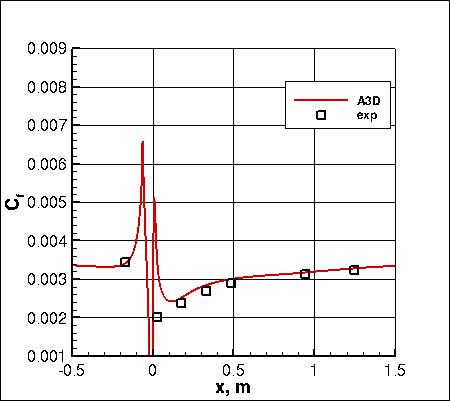
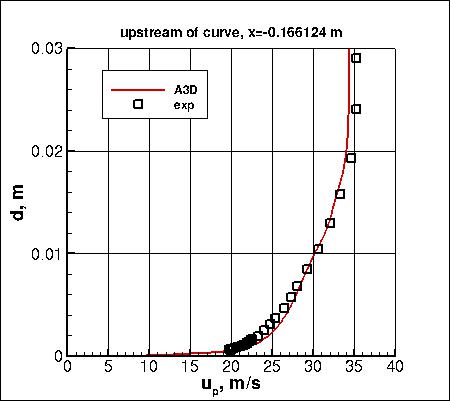
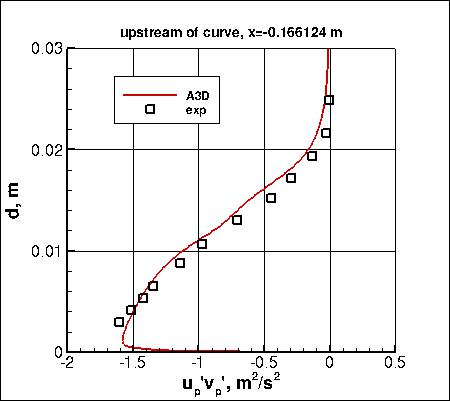
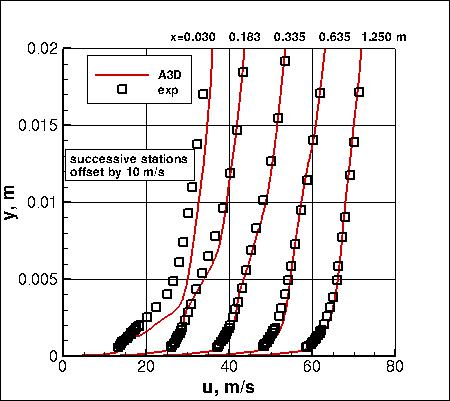

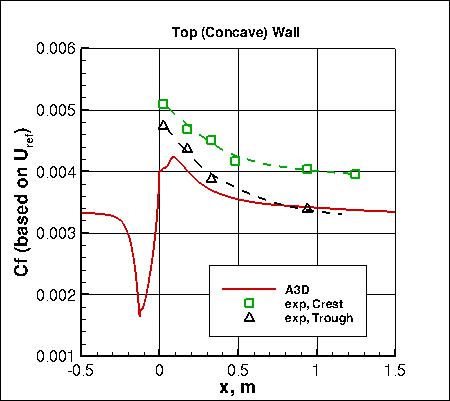
where theta = 30 deg. The distance d is taken across the channel at this upstream location.
01/27/2015 - mention of oscillations in second derivative of wall shape in provided grids
Page Curator:
Clark Pederson
Last Updated: 03/23/2021